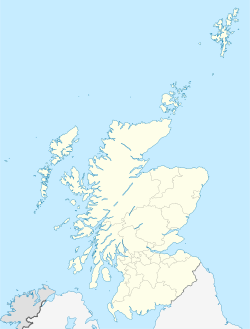Top Qs
Timeline
Chat
Perspective
Sumburgh Head
Headland in Scotland From Wikipedia, the free encyclopedia
Remove ads
Sumburgh Head is a headland located at the southern tip of the main island of the Shetland Archipelago, in northern Scotland. The head consists of a 100 m high rocky spur and topped by the Sumburgh Head Lighthouse. In the Old Norse language, Sumburgh Head was called Dunrøstar høfdi, it means "The Head onto the loud tide-race", referring to the noise of Sumburgh Roost. Robert Stevenson was the engineer in charge of building the Sumburgh Head lighthouse. Work started on the building in 1819, and the light was first lit in 1821.
Remove ads
Local ecology
The area is now recognized as a nature reserve by the Royal Society for the Protection of Birds. It is a popular viewing point for whales and dolphins.[1] The cliffs are home to large numbers of seabirds with 33,000 puffins being estimated in the year 2000. These numbers have declined sharply: for example only 570 of the birds were counted in 2017. The decline in Puffin numbers also appears to apply to other species native to Sumburgh Head.[2] The headland has been designated an Important Bird Area (IBA) by BirdLife International because it supports large colonies of breeding seabirds.[3]
Remove ads
Nearby locations
- Sumburgh Airport, which takes its name from the head, lies immediately to the north, and serves as the main airport for the Shetland Islands. Flights from here connect to mainland Scotland, the Orkney Islands and Norway.[4]
- The archaeological site of Jarlshof, at which a series of settlements existed dating back to the Neolithic period.[5]
Remove ads
Gallery
- After the Storm 1
- Beachhead Sunrise
- Banks, Sumburgh Head
- Bird on the Wing
- East Coast of Sumburgh Head
See also
References
External links
Wikiwand - on
Seamless Wikipedia browsing. On steroids.
Remove ads








